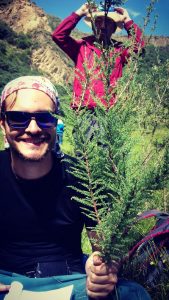
Grazing the Plains of Yellow River
Continuously our bus took us higher and higher and the vegetation became less and less until the landscape was merely covered by grass and low bushes – no trees as far as we could see! We were already excited to reach the next destination of our Sorig Tour where we were going to collect and study tibetan medical herbs and so we were wondering if there would actually be any plants left that high above sea level. As the height of the plants decreased the width of the valley we drove through became wider and wider until we found ourselves in the middle of a giant green plateau. We were surrounded by plains as far as our eyesight could reach and the silhouette of far mountain peaks reached out of the horizon like small shadowy garlands. Inbetween the tremendous sheets of blue space above and green solid ground underneath white sparks caught our attention, some stood together in grouplets and a few apart lost in the vastness of the highland, this Tibetan nomad tents remained as silent and inert little bastions of culture in this wild part of earth were time seemed to have stopped.
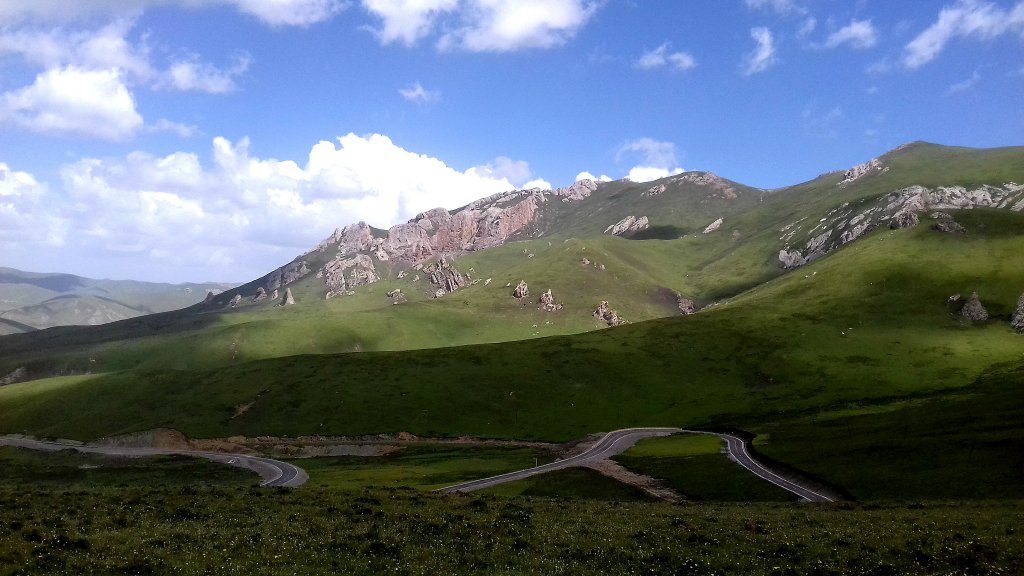
We crossed a pass between two mountains which was covered in colourful prayer flags and surrounded by flocks of grazing black yak and continued further into the Nomad’s land. All of a sudden the two lane road became twice as big and we drove through a large stupa-like gate that welcomed us to the town of Sogzong. On the main road plenty of people gathered for buying groceries at one of the many fruit- and vegetables shops or in one of these varied Chinese multi-stores which I just could not classify until today.
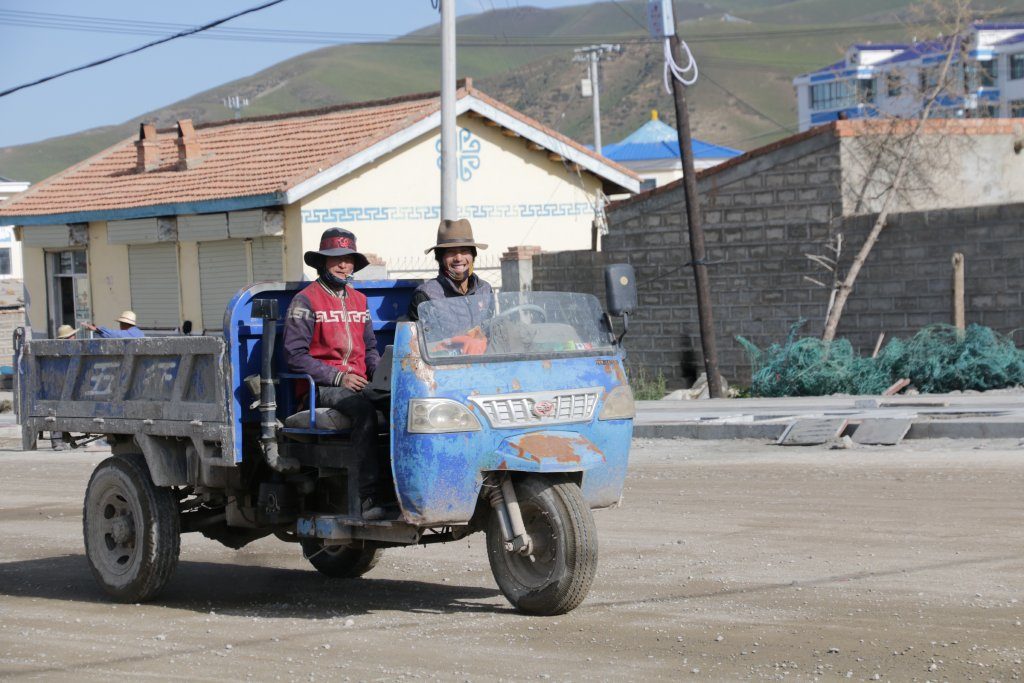
Foto by Matteo Lucca.
After spending one comfortable night in a decent hotel we packed the most important luggage and moved on to Keshengxiang about two hours’ drive south of Sogzong the next morning. The village was situated right above a horseshoe-shaped lake next to the steep sandbanks of Yellow River, which was carving his wriggled way through the expansive landscape aiming at the East China Sea thousands of kilometres away. The hills, swamps and grasslands surrounding this natural syphon formed a unique variety of microclimates which offered us perfect opportunities to find and study many different kinds of Tibetan medical herbs – in a relatively small area. Therefore our first thoughts of not having enough plants left to analyse was immediately blown away by looking at the richness nature was presenting us at this precious place.
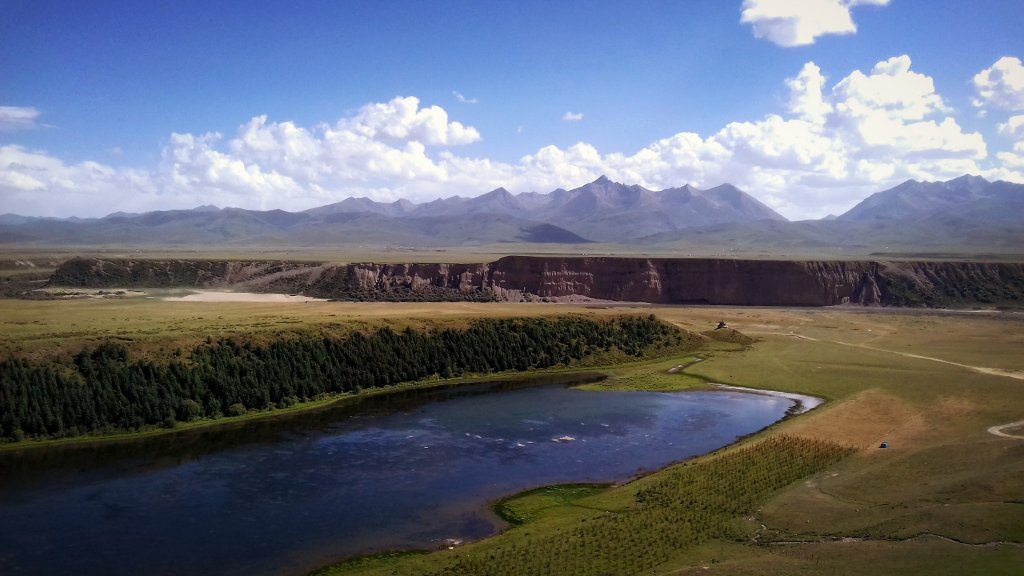
Welcome to Tanadug – Garden Eden!
Thus shortly after our arrival we already lashed together our walking boots, grabbed our digging knifes, spoons and sun screen and swarmed out to enrich our botanical knowledge. First of all went Dr. Machik with his crew of skilled local doctors of Sowa Rigpa like Dr. Wako, who were armed with thick botanical dictionaries and who jumped at every green 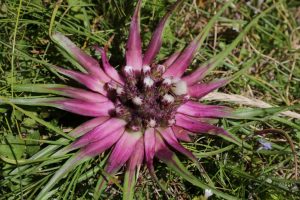 leaf or root Dr. Machik enthusiastically pointed at. Soon all our bags were as full with tibetan medical herbs with any kind of colours and
leaf or root Dr. Machik enthusiastically pointed at. Soon all our bags were as full with tibetan medical herbs with any kind of colours and 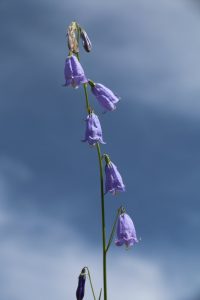 smells as our notebooks were with information about their botanical families, indications, used plant parts, tastes and potencies. Suddenly a simple meadow turned into a rich treasure chest filled with all-curing nectar! Thinking about the Yogi village and the hike up to the mountain peak we just realized all the richness we have been looking at without grasping its true value! We were so concentrated with grazing through the plains of Yellow River that we nearly forgot to occasionally have a look at all the beauties that were surrounding us. The sharp edge of the far side of the Yellow River banks which cut through the landscape, like our Swiss-army knifes through the stems of Tibetan rhubarb, separated the grey skyline of the mountains afar from the glittering yellowish streams underneath, the refreshing waterfall at the end of a narrow gorge or the reflections of colourful butterflies and dragon flies in the calm blue of the lake, everywhere our traveller souls were filled with long lasting impressions
smells as our notebooks were with information about their botanical families, indications, used plant parts, tastes and potencies. Suddenly a simple meadow turned into a rich treasure chest filled with all-curing nectar! Thinking about the Yogi village and the hike up to the mountain peak we just realized all the richness we have been looking at without grasping its true value! We were so concentrated with grazing through the plains of Yellow River that we nearly forgot to occasionally have a look at all the beauties that were surrounding us. The sharp edge of the far side of the Yellow River banks which cut through the landscape, like our Swiss-army knifes through the stems of Tibetan rhubarb, separated the grey skyline of the mountains afar from the glittering yellowish streams underneath, the refreshing waterfall at the end of a narrow gorge or the reflections of colourful butterflies and dragon flies in the calm blue of the lake, everywhere our traveller souls were filled with long lasting impressions
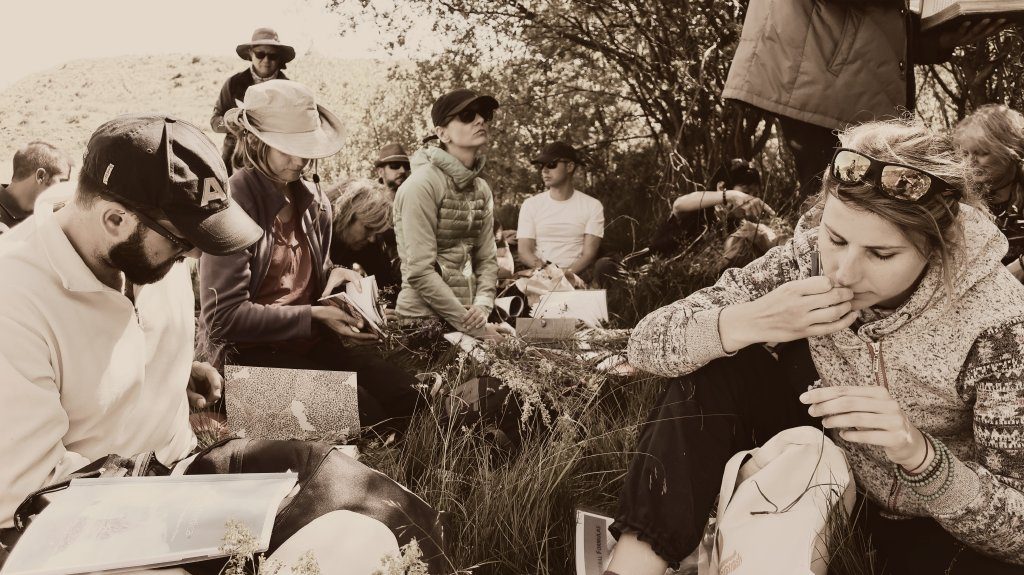
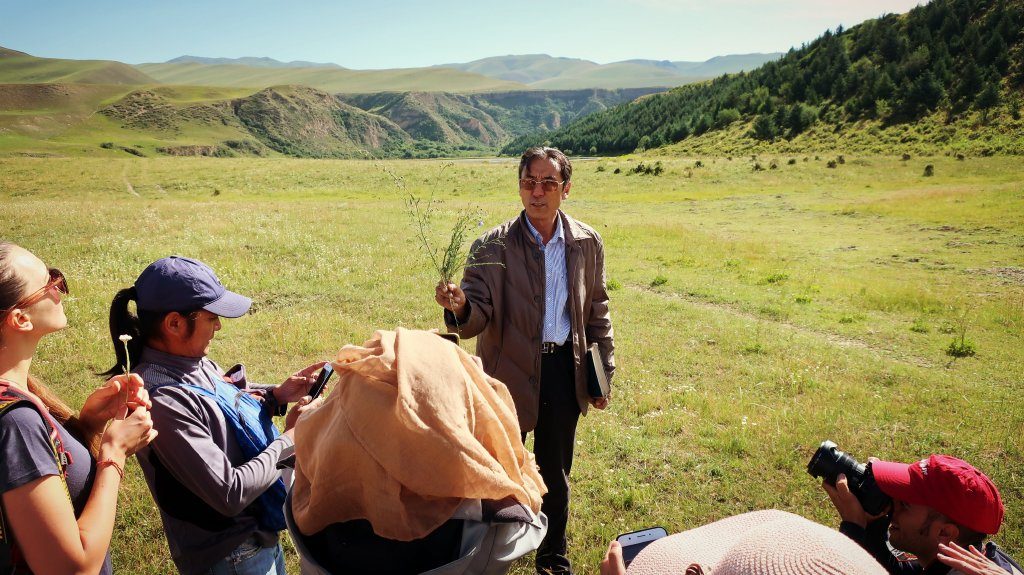 We spent two days at the riverside before we exchanged this setting with the high hills and cloud covered mountains of a neighbouring valley. A few more tibetan medical herbs enriched our repertoire and as a highlight our group was able to taste something special: A bottle of Tibetan vodka infused with Cordyceps sinensis, the famous tibetan parasitic mushroom.
We spent two days at the riverside before we exchanged this setting with the high hills and cloud covered mountains of a neighbouring valley. A few more tibetan medical herbs enriched our repertoire and as a highlight our group was able to taste something special: A bottle of Tibetan vodka infused with Cordyceps sinensis, the famous tibetan parasitic mushroom.
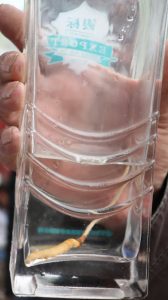
The Parasitic mushroom – tibetan aphrodisiac prepared in vodka.
[read more=”Click here to Read More” less=”Read Less”]
The Tibetan caterpillar fungus parasitizes larvae of ghost moths and grows out of the caterpillars heads, giving it a quite macabre look. However Cordyceps sinensis is considered more valuable than gold with up to 18000$ per kilogram due to its strong medical effects.
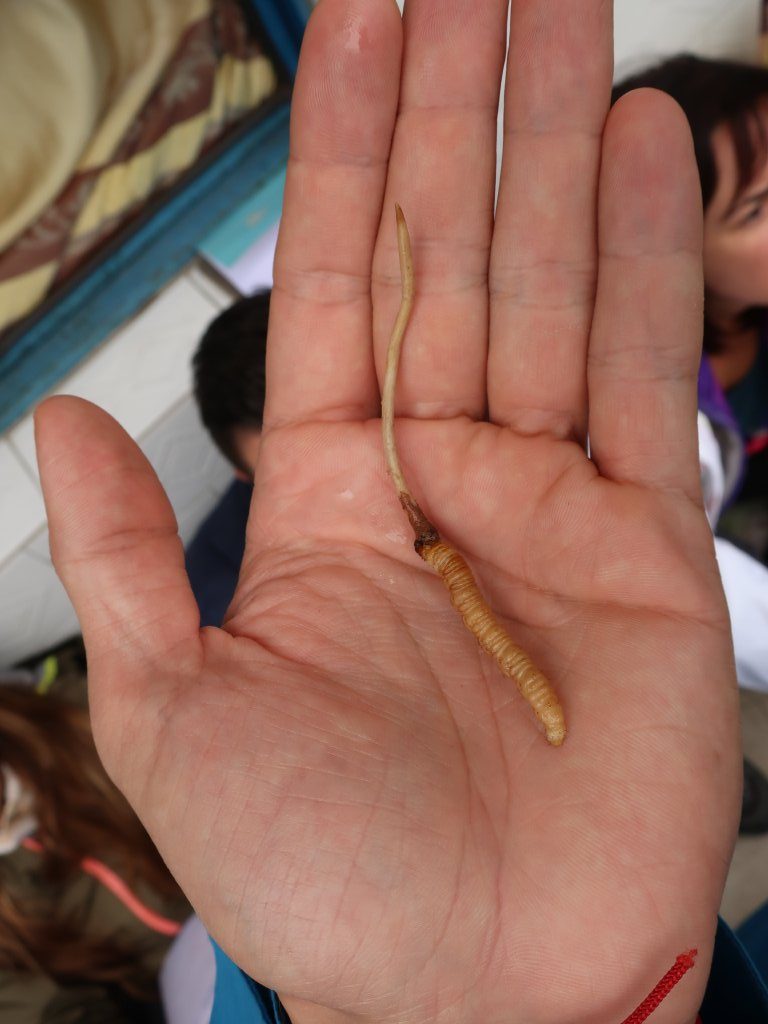
Cordyceps sinensis as finger food – half animal, half mushroom – would you eat that?
So it is acting as an effective aphrodisiac and is increasing general strength and endurance as well. It is also being used to thread different lung, kidney, liver and heart diseases as well as against cancer (i.e. bladder cancer, leukaemia, NSCLC, etc.) as more and more studies indicate (about 173 publications listed in PubMed on 07.09.2017). It was described the first time by Tibetan doctor Zurkhar Nyamnyi Dorje (1439-1475) in his Sowa Rigpa text “Instructions on a Myriad of Medicines” (Man ngag bye ba ring bsrel) and has turned into a major economic pillar for many Tibetan families in the region today.[/read]
CHEERS! … or how Tibetans say: TASHI DELEK!
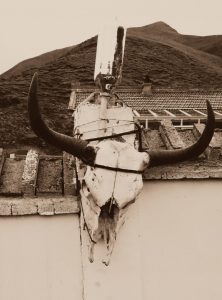
For more pictures vist the corresponding Gallery HERE!

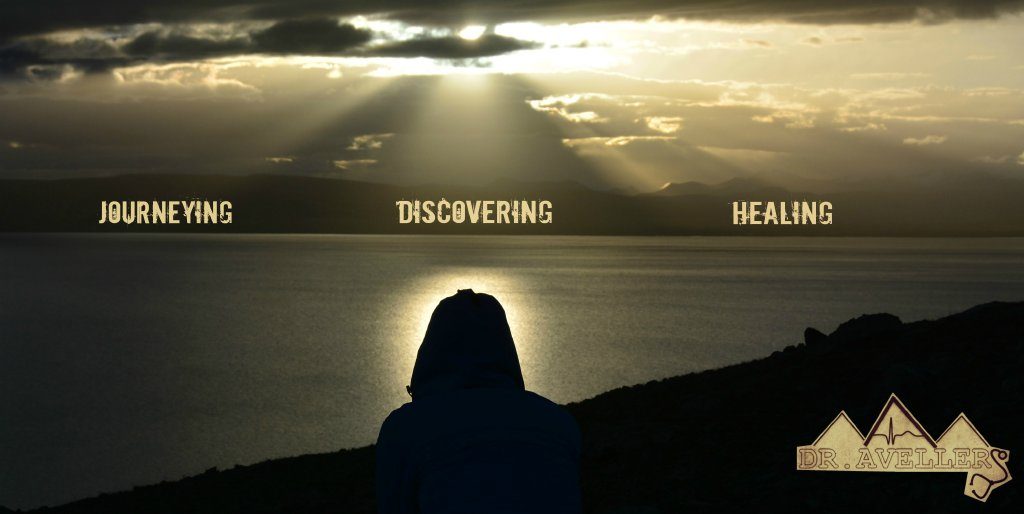
Comments
Grazing the Plains of Yellow River — No Comments
HTML tags allowed in your comment: <a href="" title=""> <abbr title=""> <acronym title=""> <b> <blockquote cite=""> <cite> <code> <del datetime=""> <em> <i> <q cite=""> <s> <strike> <strong>